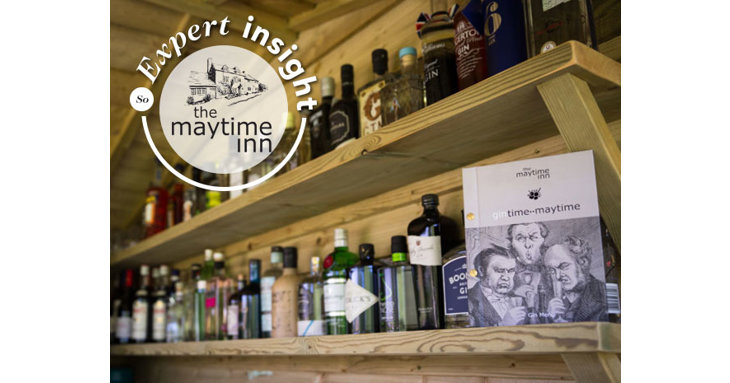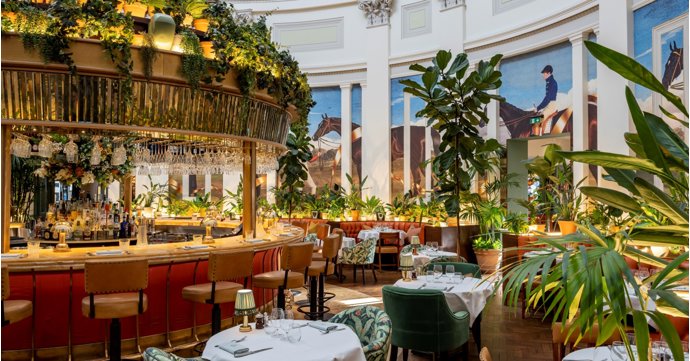Home to one of the most extensive gin collections in Gloucestershire, The Maytime Inn has even created its own menu dedicated to juniper. Suggesting brilliant pairings for each gin stocked on its menu, along with 12 tonics to choose between – guests really are spoilt for choice!
The venue also hosts private gin tasting classes for those wanting to try something a bit different, or to learn more about gin before expanding their own collection.
Speaking to SoGlos, The Maytime Inn’s owner, Dominic Wood explains how he curates their 140-strong gin menu, and how to pick the best bottles to enjoy at home.
For more information visit themaytime.com directly.
Why was gin something The Maytime became such specialists in?
I liked the idea of gin because it didn’t have the snobbery around it that you can get with other spirits. Sometimes with whisky and brandy it can be a bit unapproachable for people, and getting a good range of bottles can be ridiculously expensive. A lot of gins are roughly the same sort of price, so you can give people a really wide variety of things to try.
Whenever people walk into our bar and say ‘I don’t like gin’ we can safely say it’s just that they haven’t found the right one yet. We have 140 on the menu, so there’s always something we can tempt people with!
How did you curate such a huge collection?
We started out about five years ago with 10 or 15 gins – which at the time was quite a few! Then, new ones kept coming in and we kept hearing about interesting gins, and it started to grow naturally. We didn’t just one day decide to buy 100 gins and just pick them all from a list, we researched all the gins in detail before deciding if we should stock them.
When we got to about 70 gins, we realised it was getting quite complicated, so our gin book started almost as a training menu for the staff. We then thought it would be quite nice for the customers to see the gin notes that we were using, our thoughts behind pairing them, and why we’d chosen specific tonics or garnishes. It just encourages people to have a play with gin when they see all the things you can mix it with.
We’re actually in the midst of re-writing the gin book at the moment to make it alphabetical, and change up some of our parings just to keep everything fresh.
How do you convert people who say they don’t like gin?
If people ask for a gin with characteristics similar to something they enjoy drinking, it makes the transition easier. If they like fruity drinks or something spicy, we can give them a gin that has similar notes in it. Getting people into gin in the first place has always been the biggest challenge – making people realise there’s more than just Gordon’s, Tanqueray and Bombay Sapphire out there!
The gin boom has meant people are far more willing to try new things, but because we’ve been specialising in gin for a few years now we’ve got a reputation as somewhere you can go and try something new, which definitely helps.
What are your favourite gins at the moment, both for you and your customers?
My favourite gin is Inverroche Amber. It’s a South African gin which is made with some of the local roots and flowers that you just can’t find anywhere else in the Western cape. It’s got a very unusual characteristic, so we serve it with a normal tonic water, pink peppercorns, strawberry and orange zest. It’s something quite unusual and has a bit of an aromatic power to it compared to other gins, but every person we’ve sold it to so far has loved it.
You host gin tastings at The Maytime Inn, are they a good place to start if people are more familiar with big name gins?
Yes, anyone can book a tasting, they’re not something we do at a pre-arranged date and time, so anyone who’s in a group of four or more can have one. They cost £28 per head and that gives you three gins paired with tonics and garnishes, along with sharing boards to nibble on while you do the tasting.
It’s a really nice way for people to try something new and different, and compare different flavours.
What advice would you give to someone who’s wanting to start their own gin collection at home?
The problem is there’s so many so it can be hard to know where to start! It’s just about trying to get a nice range without needing to have 140 gin bottles at home, like we have!
Cotswolds Distillery is one that we’ve been working with since the beginning when they were selling out the back of a car! The quality and consistency are there, and it’s a fantastic product, so it’s a nice welcoming gin to any collection.
But I’d recommend trying something different wherever you can, and making a note of the ones you like and really don’t like, and learning about those flavours can help inform you when picking the next gin to add to a collection.
Another one that’s popular at The Maytime Inn is Isle of Harris gin, that one’s quite unusual because it’s made with sea kelp. Our old assistant manager went on a tour around Scotland and stumbled across a distillery, did a tour and came back with a bottle saying ‘try this, we need to stock it!’
For more information about The Maytime Inn see The Maytime Inn, call (01993) 822068, or visit themaytime.com directly.


















